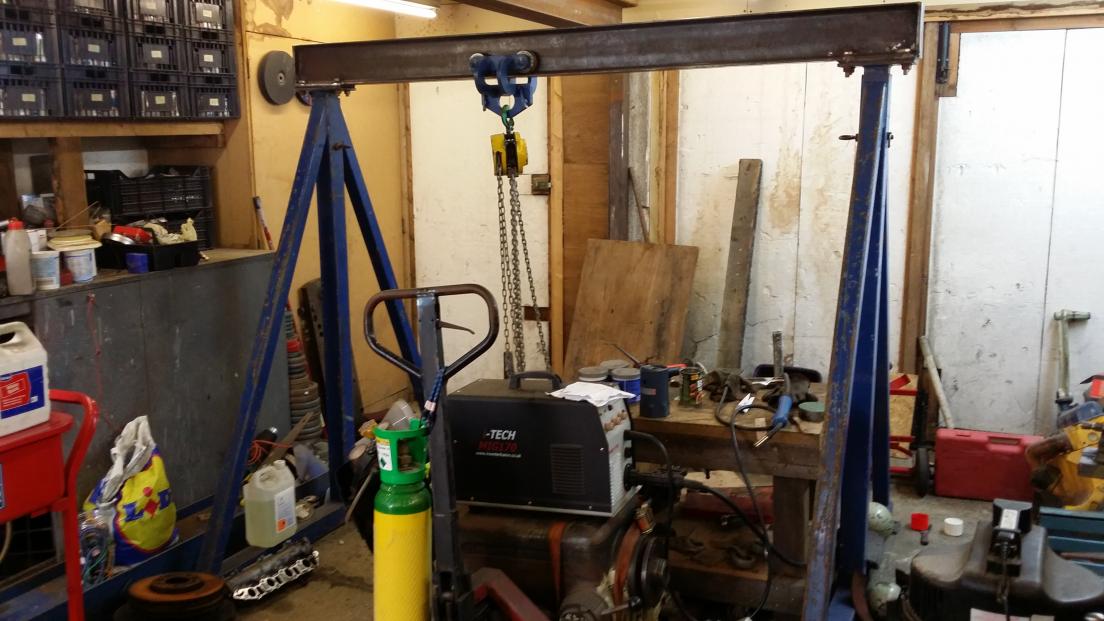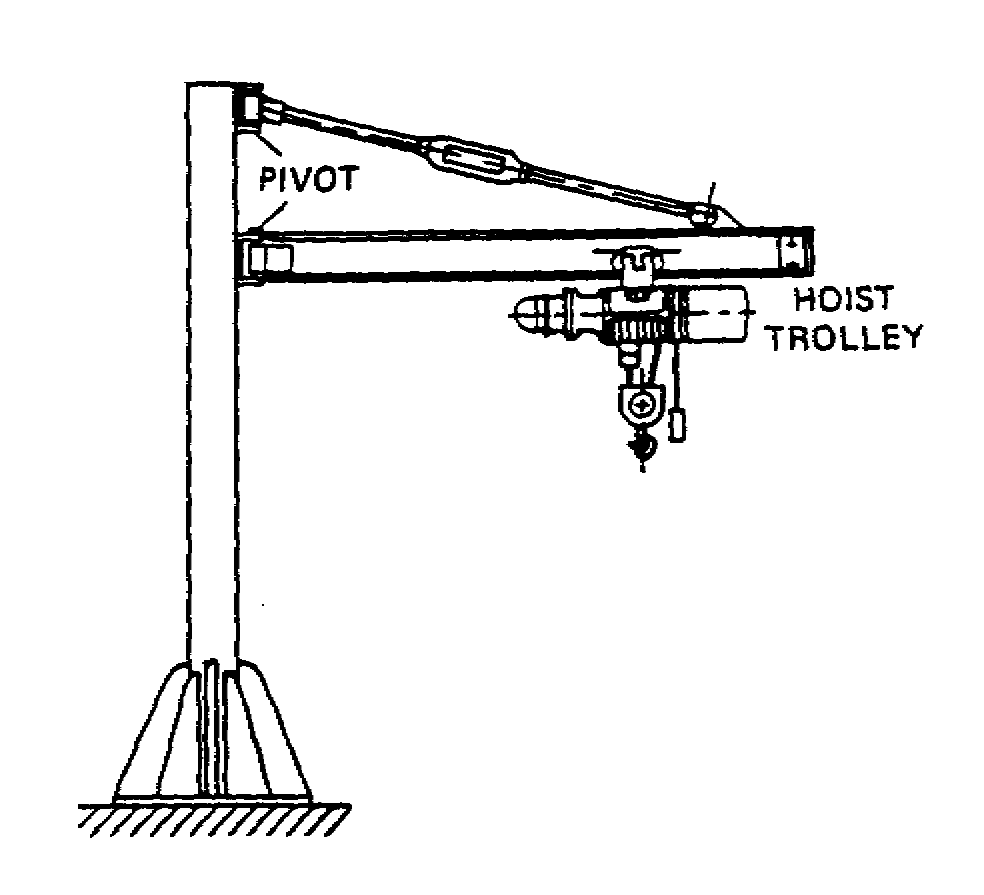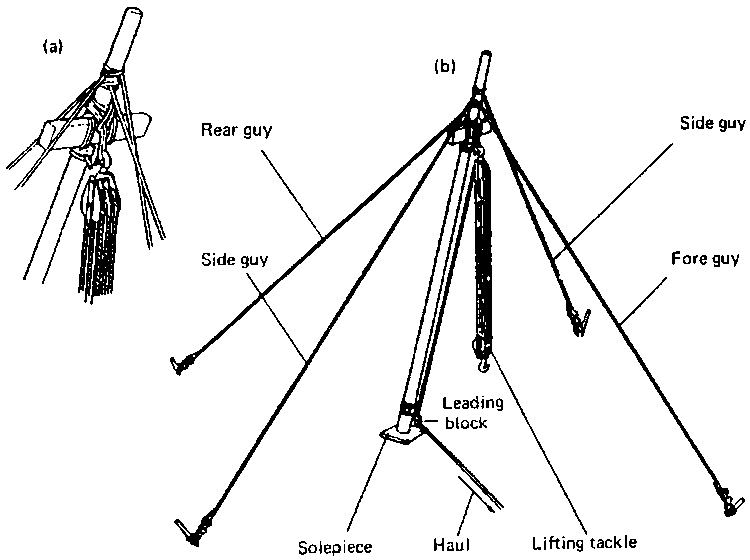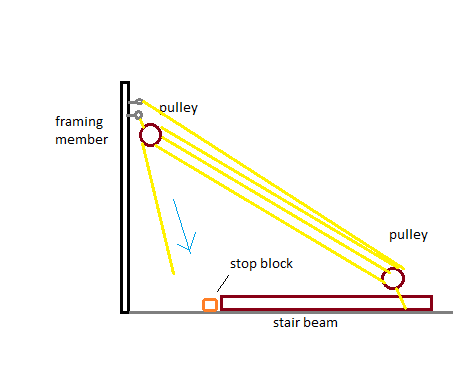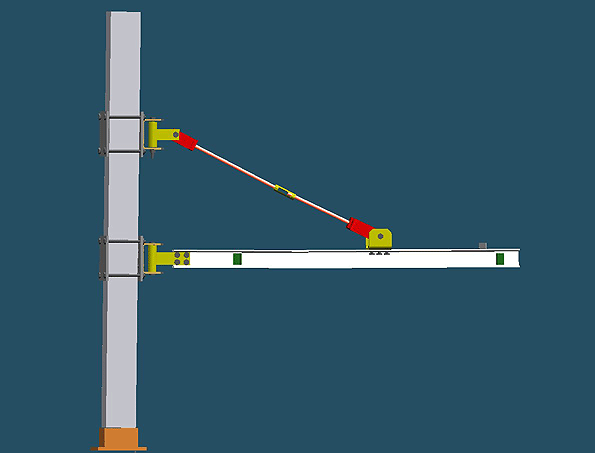I clarified that I do not have to use this device in a company open to the public and I have no employees no workers who could be injured in case of failure, but the structure will use only me in a farm shed on a farm in my property therefore in case of accidents due to poor construction or improper use I will respond personally, so who causes his illness to cry himself, premesso this I must reiterate that the beams were not delivered, a friend of mine surveyor told me that the beam stressed bending could bear the weight of 570 kg
and the deformation in the center line goes up to 2 cm
if we are safe in operation at max the steel works at 1600 kg / cmq
an IPE 100 has a resistance module of 34 cmc
the maximum effort that it can sustain is 54400 kgxcm that is 544 kgxm
being the three meter long beam and the concentrated load
in the middle (in safety) the beam can support a maximum of 725 kg
for pharmaceutical refinements
<Http://www.oppo.it/calcoli/travi/trave_acc.php>
note well
in addition to the extent of the beam itself you must also reason
on the deformation of the beam, that is on how much it can annoy that
the beam is inflected when it is under load
with the 725 kg of which above the center line the beam is lowered a little more than 1 cm
as promised when I build the slewing jib crane I attach photos so that you can judge my work, thank you again for your kind availability and your precious time, excuse me if I bored you with my questions, thanks again for the precious suggestions thanks
http://www.metalworkingfun.com/showthread.php?tid=1299
http://lshapedgarage.blogspot.it/2014/05/milling-machine-setup.html
http://lh3.ggpht.com/-aA_sEp-J1wo/U2bnzGZIe-
I/AAAAAAAALPA/wWgScXh2kC4/s1600/IMG_6521%2525282%252529%25255B4%25255D.jpg
http://crane.fourbestgoal.site/homemade-shop-jib-crane/
https://cr4.globalspec.com/thread/70248/Wall-Mounted-Rotating-Jib-Crane
http://www.chegg.com/homework-help/...ist-load-weigh-300-lb-determinethe-re-q311614
http://crane.fourbestgoal.site/homemade-shop-jib-crane/


























![TurboCAD 2020 Designer [PC Download]](https://m.media-amazon.com/images/I/51UKfAHH1LL._SL500_.jpg)


![[The Haynes GM, Ford, Chrysler Engine Performance Manual: The Haynes Manual for Understanding, Planning and Building High-Performance Engines (Haynes Techbook)] [Author: Haynes, Max] [August, 2008]](https://m.media-amazon.com/images/I/51x6eyiUHhL._SL500_.jpg)




![MeshMagic 3D Free 3D Modeling Software [Download]](https://m.media-amazon.com/images/I/B1U+p8ewjGS._SL500_.png)














![DreamPlan Home Design and Landscaping Software Free for Windows [PC Download]](https://m.media-amazon.com/images/I/51kvZH2dVLL._SL500_.jpg)






























